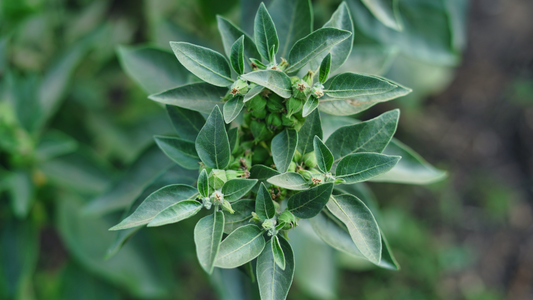- Blog
- Shilajit taste - This is what black Himalayan gold tastes like

Shilajit taste - This is what black Himalayan gold tastes like
Shilajit Taste - A Comprehensive Taste Analysis of the "King of Minerals"
Shilajit is characterized by a fascinating flavor profile that is closely linked to its natural origin. The intense taste of this mineral-rich substance presents itself as layered and complex. Particularly characteristic are the earthy and mineral notes, which are due to the centuries-long maturation in the mountain ranges. Connoisseurs especially appreciate the authenticity of the flavor, which can vary from region to region. The taste experience of Shilajit offers an exciting insight into its rich composition.
The characteristic taste of Shilajit
The flavor profile of Shilajit is exceptionally complex. Dominant are earthy and mineral notes that remind one of freshly turned forest soil. The intense taste unfolds gradually on the palate. Initially, you perceive a slightly bitter note, followed by a mineral component. The aftertaste is characterized by a lasting intensity. Noteworthy is the balance between the various flavor nuances that complement each other harmoniously. With increasing experience, users learn to perceive the subtle differences.
The different flavor notes in detail
The flavor complexity of Shilajit reveals itself in several layers. Fundamentally, an earthy base dominates, reminiscent of damp forest soil and minerals. On top of this, a slightly salty note, derived from the contained minerals, settles. A bitter undertone rounds off the taste experience and gives the Shilajit depth. Some variants additionally feature a slightly smoky or spicy component. The intensity of these flavor notes varies depending on origin and quality. High-quality varieties are characterized by a balanced interplay of these components.
Differences in flavor intensity
The flavor intensity of Shilajit varies significantly depending on the region of origin and purity level. High-quality varieties from the Himalayas often exhibit a particularly pronounced flavor profile with distinct mineral notes. The taste can range from mild-earthy to intense-mineral. The geological conditions of the origin area are decisive in this regard. Factors such as altitude, rock type, and climatic conditions significantly influence the flavor profile. With increasing purity, the intensity of the characteristic flavor notes also increases. Experienced users can draw initial conclusions about quality based on these intensity differences.
Recognizing quality features in taste
The taste assessment of Shilajit allows for important conclusions about its quality. High-quality Shilajit is characterized by a balanced, multi-layered flavor. The mineral note should be clearly recognizable without appearing metallic or artificial. A natural, earthy undertone forms the basis of an authentic flavor profile. The intensity should be even and develop slowly. High-quality Shilajit leaves a lasting, pleasant aftertaste. The consistency when dissolving provides additional clues about purity. Contaminations or low quality often manifest through unharmonious or artificially appearing flavor notes.
Warning signals of poor quality
Certain taste anomalies indicate inferior quality or contamination. An excessively bitter or chemical taste suggests improper processing. Artificial sweetness or a metallic aftertaste are clear warning signs. If the characteristic mineral note is completely absent, this could indicate strong dilution. An unpleasantly sharp or burning taste is also atypical for pure Shilajit. Quality defects are also evident through a bland or highly variable taste. When dissolving in water, no taste impurities should be perceptible.
Cultural significance of the Shilajit taste
The taste of Shilajit holds a special significance in various cultural circles. Traditional healers use the flavor profile as a quality indicator. In Ayurvedic medicine, the characteristic taste is seen as a sign of effectiveness. The taste experience is associated with the different doshas there. Mountain peoples of the Himalayas possess centuries-old knowledge regarding the taste assessment. The transmission of this expertise often occurs from generation to generation. The typical taste serves as a distinguishing feature from other mineral substances. This cultural rootedness continues to shape the understanding of the taste complexity of Shilajit to this day.
Conclusion: Learning to appreciate the taste of Shilajit
The development of an understanding of the Shilajit taste is akin to a culinary journey of discovery. With increasing experience, the various flavor nuances become apparent. The initially perhaps unfamiliar taste often transforms into a cherished flavor characteristic. Regular use sharpens the perception of the subtle differences. The appreciation of the distinctive taste usually grows with the knowledge of its origin. The interplay of the different flavor components reveals the natural complexity. A conscious engagement with the flavor profile enhances the understanding of quality. A trained palate recognizes the characteristics of high-quality Shilajit.


